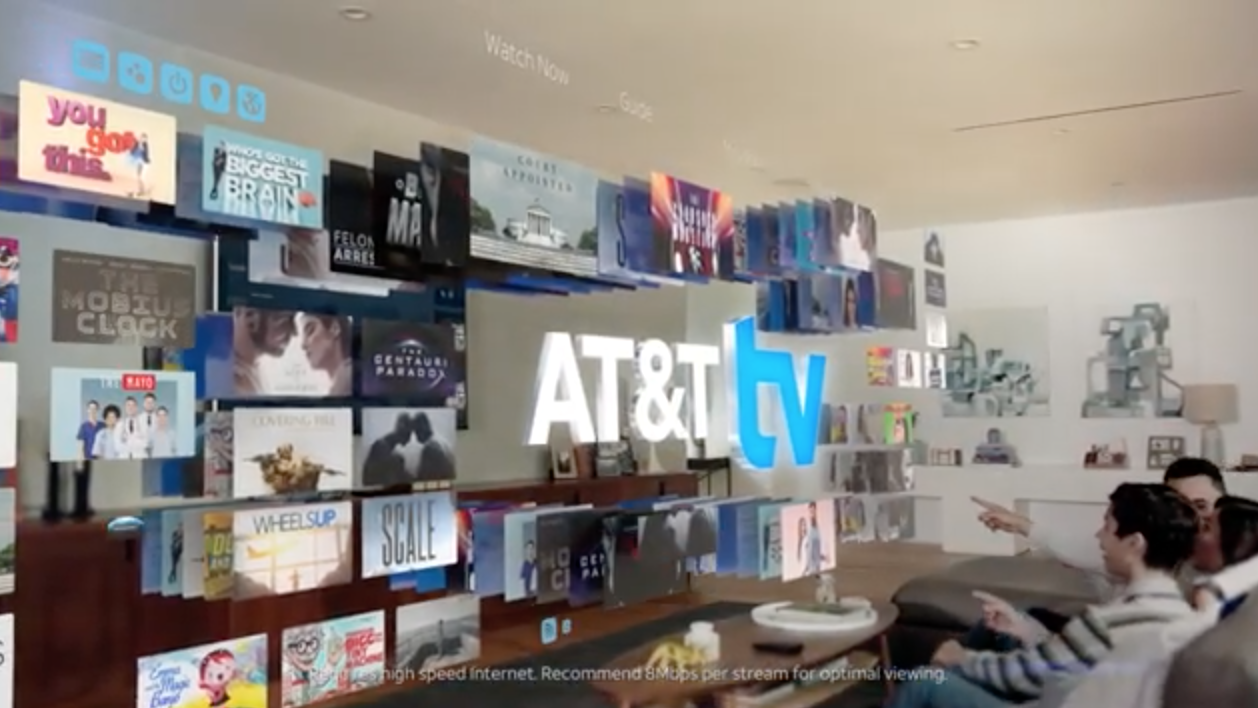
Popular Mechanics, Good Housekeeping Amazon ‘Guest House’ Facebook Ads
Not pictured.
It’s no question that the world is full of uncertainties, but while some believe that death and taxes are the only exceptions, AT&T would beg to differ. In a new ad campaign, AT&T claims that it can “guarantee” a number of things including “connectivity you depend on.”
This comes a year after AT&T suffered a nationwide network outage lasting 12 hours and resulting in millions of blocked calls (with over 25,000 being to 911). AT&T wireless customers were also unable to access the internet. However, AT&T doesn’t promise that this won’t happen again; instead it claims that if it does, the company will “make it right.”
Unfortunately, there are several caveats to this so-called connectivity guarantee.
For starters, there’s a minimum downtime requirement depending on the network. For wireless, it’s an hour; for fiber, it’s 20 minutes. Further, in order for the wireless outage to qualify, it must also be caused by a single incident impacting 10 or more towers. There are also a number of situations that aren’t covered, including power outages and outages resulting from planned maintenance for fiber, outages caused by third parties for wireless, and weather-related events for both fiber and wireless among other “events beyond the control of AT&T.”
Then, if you’ve experienced a qualifying outage, AT&T doesn’t cut you a check. Rather, the company awards you a bill credit – which may take one to two billing cycles to show up – in an amount equal to one day of service. (If the outage lasts for more than 24 hours, customers will get credit for each additional day the network is down.)
Where is all of this information disclosed? Not in the TV ad, whose fine print at the very end simply notes, “Terms and conditions apply. See att.com/guarantee for details.” And while that webpage discloses (in more fine print) some of the applicable conditions, you need to click on a tiny link to “See details” located partway down the page, or scroll down to the bottom of the page, in order to see even more terms of AT&T’s connectivity guarantee.
Clicking on “See details” brings up a pop-up with additional requirements, which, as illustrated below, are so numerous you need to scroll down within the pop-up window to read them all.
It’s worth noting that a 2023 report by IT service management company Uptime Institute ranked “third-party network provider failure,” one of the exclusions for wireless, as the second most common cause of network/connectivity-related outages. Cyberattacks, which would seemingly fall under the exemption for “events beyond the control of AT&T,” ranked sixth. And while the duration of downtime depends on a wide range of factors, it’s possible that you’ll experience a disruption that doesn’t meet AT&T’s minimum downtime requirements.
AT&T responds
In response to a request for comment, an AT&T spokesperson said the company complies “with all laws and regulations related to commercial disclosures and are fully transparent with our customers about the terms of our offers.” The spokesperson said AT&T includes the terms of its connectivity guarantee on its website as opposed to the ad itself because it is “easier” for consumers to navigate the website.
When asked if the outages that qualify for the connectivity guarantee are typical of the events AT&T customers experience, the spokesperson said:
Outages can happen for a variety of reasons and, when they do, we work quickly to resolve them and restore service.
With regard to outages caused by third parties, the company spokesperson said it is “unreasonable to hold us financially responsible for the careless or malicious acts of others, and to suggest otherwise is just wrong.”
The bottom line
Just like you can’t guarantee your coworker holding the elevator for you, you may not be able to guarantee you’ll secure a bill credit from AT&T if you lose connectivity.
Consumers should be wary of ads that promote guarantees, and look into the terms and conditions of these enticing offers before signing up.
Find more of TINA.org’s coverage on fine print here.
Our Ad Alerts are not just about false and deceptive marketing issues, but may also be about ads that, although not necessarily deceptive, should be viewed with caution. Ad Alerts can also be about single issues and may not include a comprehensive list of all marketing issues relating to the brand discussed.
Not pictured.
Products’ purported efficacy against COVID-19 reflects results from lab studies, not real-world studies. There’s a big difference.
‘The future of TV has finally arrived’ and with it, hidden fees.

